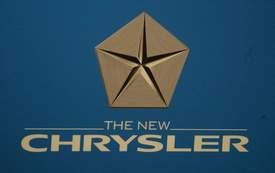After a bargaining session lasting more than 24 hours, the United Auto Workers went on strike at Chrysler at the 11:00 a.m. deadline today that they had previously announced. Reports indicated that the two sides had made little progress toward a contract despite the extended bargaining session. Chrysler Vice-President and former President Tom LaSorda is technically in charge of the negotiations, but it is clear that the management decisions are being made by Chrysler’s new President, Robert Nardelli, and his Cerberus masters.
Indications are that the union is, as it usually does, seeking a contract that fits the pattern of the one first negotiated, that being the GM contract. That contract’s two key provisions were a VEBA to shed retiree health care liabilities and, in exchange, commitments by the company to keep designated plants operating during the term of the contract. The contract also included wage and benefit concessions, most particularly a reduction in wages for non-production line UAW members.
Though Chrysler may not much care about a short strike – it has shut down five plants to trim inventory – the UAW is probably calculating that the company doesn’t have the stomach for a long strike. The company is just introducing its new line of mini-vans, which have been the product of heavy investment in a market the company still dominates. Reviews of the new minivan have been overwhelmingly favorable. Most reviewers have considered it clearly superior to the Honda Odyssey. The Wall Street Journal even went so far as to call the new Chrysler Town & Country the best $30,000 car on the market – not minivan, “car.”
So, Chrysler has a lot to lose. Damaging that roll-out could really hurt.
But Chrysler’s management seems to be hanging tough. The GM strike may have been more a publicity stunt designed to soften up the UAW membership for the ratification vote than real strike. But the strike against Chrysler appears to be more determined. The two sides appear to be very far apart.
Insiders say that Chrysler does not want to pay as much, on a percentage basis, as did GM to fund the VEBA, and that Chrysler does not want to give assurances that plants will remain open. In both areas, it has less flexibility than GM. The company needs new products, quickly. That means they will be trying to develop new models on a shorter timetable than is traditional. That, in turn, means they don’t want to hamstring themselves by committing to what will be built where. Moreover, every dime they shell out to fund a VEBA is a dime they don’t have for product development. While that’s true at GM also, GM has more dimes.
The UAW has a lot at stake, too: Ford. Having secured a contract with GM and having gotten far enough into the ratification process that the union leaders could be sure the contract would be ratified (to date, three-quarters of the locals have voted, most to ratify it; the UAW is expected to formally announce ratification soon), the union could have next targeted Ford. Ford’s chairman, Bill Ford, publicly announced the company’s belief that the GM contract provided a “framework we can work with.”
That means the union must get a contract with Chrysler which is pretty much the same as the one it got at GM. If it doesn’t, if Chrysler gets a deal that’s better or even merely different, that opens the door to Ford also demanding separate consideration, different and better contract terms. The end result of that is likely to be a lot of unhappy union members, each of whom believes that workers at another company got the better deal.
Yet, the union next targeted Chrysler. That puts the UAW in a box: they previously stiffed Chrysler, refusing two years ago to extend to that company concessions on health care benefits which it gave to both Ford and GM. By refusing those concessions, the union effectively established a major contract difference between automakers. That makes it more difficult for them to argue that the new contract has to be a clone of the GM contract. Moreover, having refused concessions two years ago, they’re going to have to give away more to Chrysler than they did to GM, just to reach an agreement that has parity. GM workers are paid more than those at either Ford or GM.
Cerberus’s purchase of Chrysler remains a mystery. The company’s future depends, in large part, on the outcome of these contract negotiations and the pending fuel economy legislation in Congress. Using that logic, some observers are guessing that a back door deal was reached between the union and Cerberus before the buy-out deal was struck. But, that’s hard to believe. Ron Gettelfinger, union president, and Rick Wagoner, GM CEO know each other and meet regularly. It would be logical that they’d have discussed the framework of a contract long before the start of formal negotiations. But nobody at Cerberus is a known quantity to Gettelfinger, and it is hard to believe either would trust the other enough to bet their futures on a behind-the-scenes deal.
Of course, Cerberus does have one debt to pay to the UAW: it owes the UAW for the opportunity to buy the company. The decision by Daimler to sell Chrysler was provoked, at least in part, by the UAW’s attitude toward the benefit concessions of two years ago. At that time, the UAW refused the concessions on the basis that DaimlerChrysler was not in tough financial shape, even though the Chrysler unit itself was doing poorly. This contributed to Daimler’s decision to reduce investment in the Chrysler unit and, ultimately, sell it.

